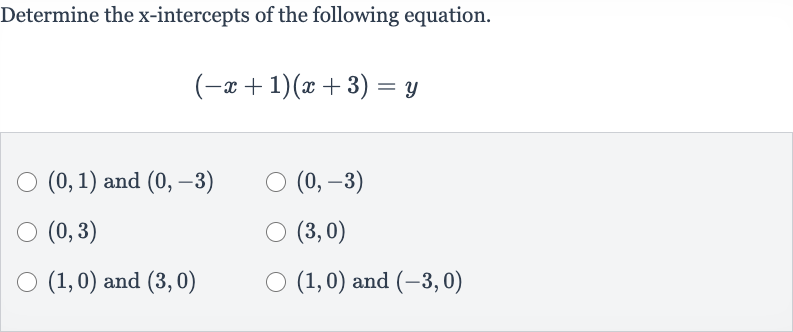Full solution
Q. Determine the -intercepts of the following equation. and and and
- Understand -intercepts: Understand what -intercepts mean. The -intercepts of a function are the points where the graph of the function crosses the -axis. At these points, the value of is .
- Set function equal to zero: Set the function equal to zero to find the x-intercepts. Since represents the height above the x-axis, we set to and solve for .
- Use zero product property: Use the zero product property. If the product of two factors is zero, then at least one of the factors must be zero. We set each factor equal to zero and solve for . or
- Solve first equation: Solve the first equation for .
- Solve second equation: Solve the second equation for .
- Combine results: Combine the results to find the -intercepts. The -intercepts are the -values we found by setting to and solving for . Therefore, the -intercepts are and .
More problems from Domain and range of square root functions: equations
QuestionGet tutor help
QuestionGet tutor help

